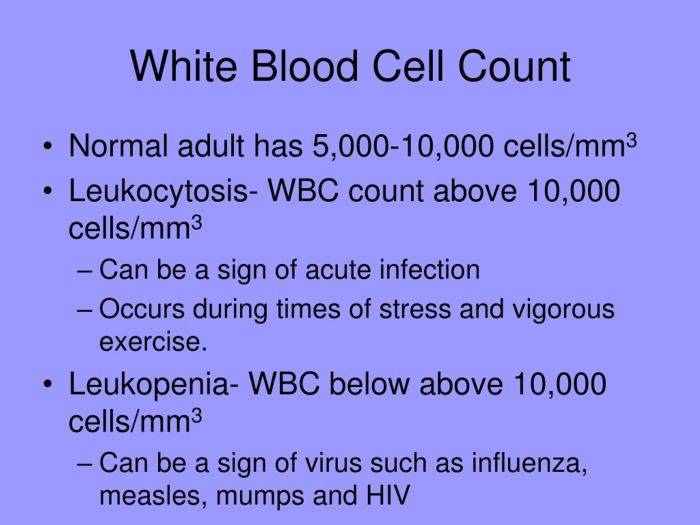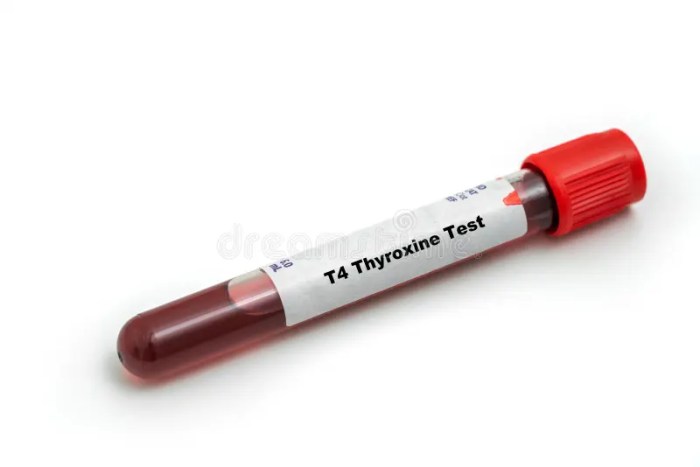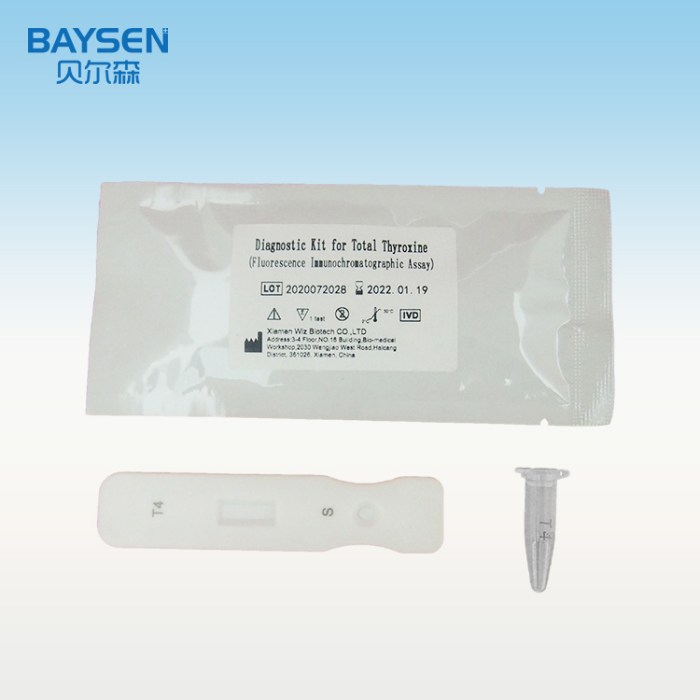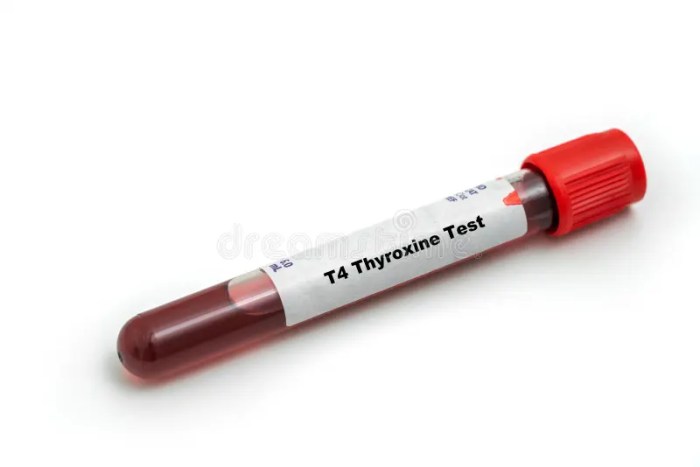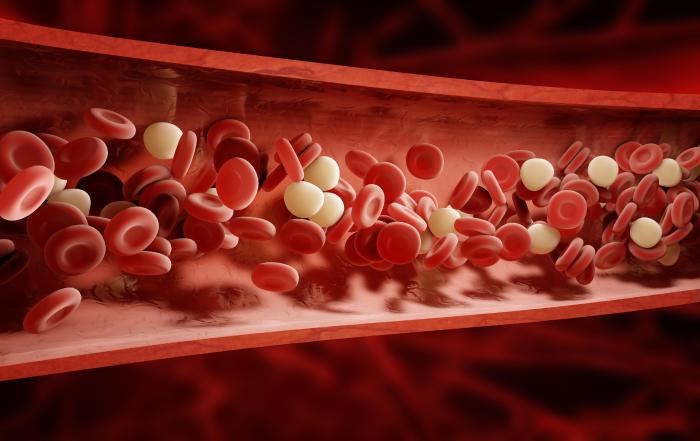Fasting for blood work is crucial for accurate results. This guide delves into various fasting methods, their impact on blood test results, and essential pre-blood work preparation. We’ll explore water-only fasts, intermittent fasting, and more, examining how different durations affect various blood markers like glucose and cholesterol. Understanding these nuances is key to ensuring your blood work reflects your true health status.
From understanding different fasting protocols to navigating potential medication interactions, this guide equips you with the knowledge to confidently prepare for your blood work. We’ll cover essential pre-blood work steps, stress management tips, and even address special considerations for children and the elderly. Ultimately, this comprehensive resource aims to empower you with the information you need to achieve the most accurate and reliable results possible.
Understanding Fasting Protocols
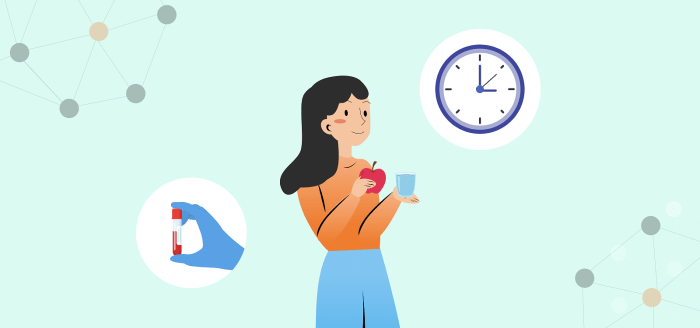
Fasting before blood work is crucial for obtaining accurate results. Different types of fasting protocols affect various blood markers, and understanding these nuances is vital for reliable interpretation. This section delves into the specifics of various fasting methods, durations, and their impact on blood test results.Fasting protocols are designed to minimize the influence of recent meals on blood test readings.
By eliminating or restricting food intake, fasting allows the body to stabilize its internal systems, providing a more consistent and reliable baseline for the laboratory analysis.
Various Fasting Methods
Different fasting protocols are used, each with its own set of rules and considerations for blood work. Understanding these variations is essential for choosing the appropriate method and ensuring accurate results.
Fasting for blood work can be a bit of a pain, but it’s crucial for accurate results. One thing to consider alongside this is how various neurological conditions like hemianopsia, a visual field defect, can sometimes affect blood work interpretation. Learning more about hemianopsia symptoms, causes, diagnosis, and treatment can be really helpful in understanding these potential complications.
This resource is a great starting point. Ultimately, proper preparation, including fasting, is key for reliable blood work results.
- Water-only fasts are a common method where only water is consumed. This type of fast often requires a specific duration before blood collection. It is designed to reduce the impact of food on blood glucose, lipid, and other relevant markers. A water-only fast is often preferred for routine blood work because it isolates the body’s response to various conditions, reducing potential variability in test results.
- Intermittent fasting (IF) involves cycling between periods of eating and abstaining from food. Different IF protocols exist, each with varying durations of fasting. For blood work, it’s crucial to follow a specific IF schedule for several days prior to the test to ensure accurate readings. For example, if an IF protocol involves 16 hours of fasting, it is essential to adhere to this schedule to achieve the intended effect.
It is vital to understand the protocol before starting and maintain consistency.
- Specific Dietary Protocols: Some protocols, such as the 72-hour fast or a specific meal plan, may be prescribed by healthcare providers for specific tests or conditions. These methods require strict adherence to the Artikeld instructions to avoid inaccurate results.
Recommended Fasting Durations
The recommended duration of fasting varies depending on the type of blood test being conducted. Some tests require shorter fasts than others. It’s crucial to consult the specific instructions provided by the laboratory or healthcare provider for accurate guidelines.
- Routine blood tests typically require an 8-12 hour fast, limiting the impact of recent meals on blood glucose and lipid levels. This duration is usually sufficient for a wide range of routine blood work.
- Tests assessing glucose metabolism or insulin sensitivity often require a longer fast, such as 12-14 hours, to obtain more accurate readings.
- Specific medical tests might require extended fasts, such as 14-16 hours, depending on the specific analysis.
Implications of Not Following Guidelines
Failing to adhere to fasting guidelines can lead to inaccurate blood test results. This can affect diagnosis, treatment plans, and overall health management. Inaccurate results can lead to misdiagnosis, unnecessary treatments, or delays in receiving the appropriate care.
- Elevated glucose levels: Eating before a glucose test can significantly inflate the readings, leading to an inaccurate assessment of glucose metabolism. This can mask underlying issues or lead to unnecessary concern.
- Altered lipid profiles: Consumption of fatty foods before a lipid panel can skew the results, potentially misrepresenting cholesterol levels and other lipid markers. This can affect the assessment of cardiovascular risk.
- Distorted hormone levels: Some hormones are affected by recent meals. Not following the fasting guidelines can lead to inaccurate hormone measurements, which can hinder the assessment of various health conditions.
Impact on Blood Markers
Different fasting protocols can affect specific blood markers in various ways. For instance, a water-only fast can impact electrolyte levels if not managed correctly. This emphasizes the importance of adhering to specific protocols.
- Glucose levels are directly influenced by food intake. A longer fast results in lower glucose levels. A shorter fast will show higher glucose levels, potentially obscuring the true picture of glucose metabolism.
- Lipid levels are also affected by food intake. A longer fast can lead to more stable and reliable readings of cholesterol and triglycerides. A shorter fast may result in misleading values.
- Insulin levels are closely tied to glucose levels. Fasting helps to stabilize insulin levels, allowing for a more accurate assessment of insulin sensitivity and glucose regulation.
Consistency in Fasting Protocols
Consistency in following a chosen fasting protocol is essential for reliable blood test results. Variability in adherence can introduce errors in the results. Maintaining a consistent routine, especially when it comes to fasting, is crucial for ensuring that the tests reflect the true physiological state of the patient.
Table: Fasting Methods and Recommended Duration for Blood Work
| Fasting Method | Recommended Duration (Hours) |
|---|---|
| Water-only fast | 8-16 |
| Intermittent Fasting | 12-16 (depending on specific protocol) |
| Specific Dietary Protocols | Variable (based on specific instructions) |
Impact on Blood Test Results
Fasting is a crucial step in preparing for blood tests, significantly impacting the accuracy of the results. Understanding how fasting affects various blood components is vital for interpreting the data correctly. Different blood markers react differently to fasting, and recognizing these variations is essential for proper medical assessment.The effects of fasting on blood test results are multifaceted. Fasting protocols are designed to isolate the baseline levels of certain substances, allowing doctors to evaluate the body’s metabolic state and identify potential underlying health issues.
Getting ready for those crucial blood tests often means fasting. It’s important to follow the instructions carefully, and sometimes that means understanding what not to eat or drink. For instance, if you’re experiencing a lower respiratory infection, such as bronchitis or pneumonia, it’s crucial to discuss any medications or conditions with your doctor before fasting for blood work.
Proper preparation is key to ensuring accurate results, so make sure you understand the specific guidelines for your test. what is a lower respiratory infection Understanding potential underlying issues like this will help you better prepare for your blood work. Just remember, always check with your doctor before making any significant dietary changes, especially when fasting.
The duration of the fast plays a crucial role in determining the observed changes in blood test readings. This section explores the influence of fasting on various blood components and factors that may influence results despite proper adherence to the protocol.
Impact on Glucose Levels
Fasting significantly impacts glucose levels, reflecting the body’s ability to regulate blood sugar. Prolonged fasting often leads to a decrease in glucose levels as the body draws upon stored glycogen and utilizes alternative energy sources. This decrease is expected, and deviations from the norm could signal underlying conditions like diabetes or hypoglycemia. For example, an individual with undiagnosed diabetes might show unusually high glucose levels even after an overnight fast, while a person with reactive hypoglycemia might experience a significant drop in glucose levels after an extended fast.
Impact on Cholesterol Levels
Fasting affects cholesterol levels, primarily influencing the readings of total cholesterol, LDL (“bad”), and HDL (“good”) cholesterol. Lipid profiles are often evaluated after a specific fasting period, usually overnight or 12 hours, to get a more accurate picture of the body’s baseline cholesterol levels. Fasting can lead to a slight decrease in total cholesterol, LDL, and sometimes an increase in HDL, which can be attributed to the body’s metabolic response to fasting.
For instance, someone who routinely consumes high-fat meals might see a significant reduction in total cholesterol after a 12-hour fast. The exact changes will vary based on individual factors like diet and health status.
Impact on Electrolytes
Fasting can influence electrolyte levels, particularly sodium, potassium, and calcium. The body adjusts to the lack of dietary intake, potentially affecting these crucial minerals. Deviations from normal ranges may indicate underlying medical issues, such as kidney disease or electrolyte imbalances. For instance, someone with a history of dehydration might show lower-than-normal sodium levels after a prolonged fast.
Impact on Triglycerides
Fasting significantly impacts triglyceride levels. Triglycerides are a type of fat in the blood, and their levels are often measured after a specific fasting period. Fasting typically leads to a reduction in triglyceride levels as the body reduces fat mobilization. Variations in triglyceride levels can be linked to diet, exercise, and overall health.
Factors Influencing Blood Test Results
While adhering to the fasting protocol is essential, other factors can influence blood test results. These include hydration status, medications, recent meals or snacks, and underlying health conditions. Medications can affect various blood markers, while recent consumption of high-fat meals can influence lipid profiles. Stress levels can also play a role in the results. For example, individuals under significant stress might exhibit elevated cortisol levels, which could affect blood glucose readings.
Table: Impact of Fasting Duration on Key Blood Markers
| Fasting Duration | Glucose (mg/dL) | Triglycerides (mg/dL) |
|---|---|---|
| 8 hours | 70-100 | 50-150 |
| 12 hours | 60-90 | 40-120 |
| 16 hours | 50-80 | 30-100 |
Note: Values are approximate ranges and can vary based on individual factors. Consult with a healthcare professional for personalized interpretations.
Pre-Blood Work Preparation: Fasting For Blood Work
Getting ready for blood work involves more than just showing up. Proper preparation significantly impacts the accuracy of your results, and understanding the necessary steps can ease any anxieties you may have. This section will guide you through the crucial pre-blood work steps, including hydration, fasting, medication management, and stress reduction techniques.
Hydration Guidelines
Adequate hydration is essential for blood work. Dehydration can thicken your blood, potentially affecting the accuracy of certain measurements. Aim for a balanced intake of fluids throughout the day leading up to your appointment, but avoid excessive amounts immediately before the blood draw. This helps ensure your blood is properly diluted for optimal testing.
Importance of Avoiding Food and Drinks
The impact of food and drink on blood test results is substantial. Many blood tests measure substances that fluctuate based on recent food and drink intake. Therefore, following the prescribed fasting period is crucial. Fasting usually involves avoiding food and drinks (including water) for a specific time period before your appointment. This allows your body to stabilize levels of certain elements, providing more accurate results.
Managing Stress and Anxiety Related to Blood Draws
Blood draws can sometimes be stressful or anxiety-provoking for many people. There are ways to mitigate these feelings. Deep breathing exercises, mindfulness techniques, and talking to a healthcare professional about your concerns can all help. Consider these methods to better manage any anxieties you might experience.
Role of Medication in Influencing Blood Test Results, Fasting for blood work
Many medications can alter the results of your blood tests. This is important to communicate to the healthcare professional. Understanding how different medications might affect the results can help you prepare effectively. The specific impact varies depending on the medication and the test being performed.
Handling Medication During the Fasting Period
If you’re taking medication, discuss with your doctor or the laboratory staff about the appropriate timing of your medication in relation to the fasting period. Some medications require specific timing to maintain their effectiveness and avoid interference with blood test results. Adhering to the instructions from your healthcare team is paramount.
Common Medications Impacting Blood Test Results and Management
Certain medications commonly affect blood test results. This list is not exhaustive, and you should always consult with your doctor or the laboratory personnel about your specific medications.
| Medication Category | Potential Impact on Blood Tests | Management Strategy |
|---|---|---|
| Aspirin and other blood thinners | May affect clotting time results. | Follow your doctor’s instructions regarding when to take or discontinue the medication. |
| Vitamins and Supplements | May elevate levels of certain vitamins or minerals in the blood. | Inform the laboratory staff about any supplements you’re taking. |
| Antibiotics | Can influence liver function tests. | Adhere to your doctor’s directions for medication timing. |
| Steroids | Can impact glucose and other hormone levels. | Communicate with your healthcare team regarding the timing of your steroid intake. |
| Thyroid medications | Can affect thyroid hormone levels. | Follow your doctor’s instructions on medication timing. |
Checklist for Blood Draw Appointment
Bringing the right materials can make your appointment smoother. A well-prepared checklist will help ensure you’re ready to go.
- Your photo identification (driver’s license, passport).
- Your insurance card.
- A list of your current medications and dosages.
- A list of any allergies.
- A pen and paper for any notes.
- A comfortable outfit.
- Any specific instructions from your healthcare provider.
Clinical Considerations

Fasting for blood work is a crucial part of the process, but not every individual’s needs are the same. Certain medical conditions can affect how the body processes fasting, impacting the accuracy of blood test results. Understanding these nuances is essential for both patients and healthcare providers to ensure reliable and meaningful diagnostic information.
Specific Clinical Conditions Requiring Adjustments
Medical conditions can significantly influence how the body handles fasting. Diabetes, for example, often necessitates adjustments to fasting times and blood sugar monitoring to ensure accurate readings. Similarly, individuals with kidney disease or liver dysfunction may require modified protocols due to potential impacts on metabolism and nutrient processing. Gastrointestinal disorders, including inflammatory bowel disease, can also affect the interpretation of blood tests if not managed correctly in conjunction with fasting.
Need for Consultation with a Healthcare Professional
Tailored fasting guidelines are crucial for obtaining accurate blood test results. A healthcare professional can assess individual circumstances, including pre-existing medical conditions, medications, and recent dietary intake, to determine the appropriate fasting protocol. This individualized approach minimizes the risk of inaccurate results and ensures that the test is interpreted correctly in the context of the patient’s overall health.
Getting ready for your blood work often involves fasting, which can be a bit of a hassle. But, understanding how your body functions, and how things like supplements might influence those results, can be really helpful. For instance, some people wonder if can supplements help balance your hormones , and if so, how that might impact the blood work.
Ultimately, preparing for your fasting blood work is all about getting the most accurate results possible.
Special Considerations for Children and the Elderly
Children and the elderly require specific attention when considering fasting for blood work. Children may have difficulty adhering to fasting guidelines due to their age and developmental stage. The elderly may have underlying health conditions or decreased metabolic capacity that requires a more cautious approach to fasting. These considerations necessitate a more empathetic and flexible approach to fasting protocols, potentially involving shorter fasting periods or alternative testing methods.
Situations Where Fasting May Be Advised Against
In certain situations, fasting might not be the best approach for blood testing. For example, if a patient is already experiencing significant dehydration or has a history of fainting, fasting might be contraindicated. This is especially important when dealing with critically ill patients or those with certain electrolyte imbalances. It’s vital to prioritize the patient’s well-being above the need for a strict fasting protocol.
Consultation with a healthcare provider is critical to evaluate the risks and benefits of fasting in each individual case.
Clear Communication Between Patient and Healthcare Provider
Open communication between the patient and healthcare provider is paramount. The patient should clearly communicate any pre-existing medical conditions, medications, or recent dietary changes to the healthcare provider. Likewise, the healthcare provider should thoroughly explain the fasting protocol and answer any questions the patient may have. This clear exchange of information is vital for ensuring accurate blood test results and a positive patient experience.
Recommended Fasting Protocols for Different Clinical Conditions
| Clinical Condition | Recommended Fasting Protocol |
|---|---|
| Diabetes | Strict adherence to prescribed fasting time, blood sugar monitoring, and possible adjustments based on medication schedule. |
| Kidney Disease | Shorter fasting period, careful monitoring for signs of dehydration or electrolyte imbalance, and potential use of alternative testing methods if necessary. |
| Liver Dysfunction | Individualized fasting protocol, taking into account the specific nature of liver impairment, and potentially adjusting the timing and duration of fasting. |
| Gastrointestinal Disorders | Consultation with a healthcare professional to determine the most appropriate fasting protocol, considering the specific nature of the gastrointestinal condition and potential impacts on test interpretation. |
| Dehydration/Electrolyte Imbalance | Fasting may be contraindicated. Alternative testing methods may be necessary. |
| Critically Ill Patients | Fasting may be contraindicated. Alternative testing methods should be prioritized. |
| Elderly Patients | Shorter fasting periods, careful monitoring for signs of dehydration or weakness, and potential adjustments based on the patient’s overall health. |
| Children | Shorter fasting periods, flexibility in the protocol, and potential adjustments based on the child’s developmental stage and ability to comply with the guidelines. |
Patient Information and Guidance
Clear and concise information is crucial for patients preparing for blood work. Proper understanding of fasting protocols is essential to ensure accurate test results and avoid unnecessary complications. This section provides vital resources and guidance for patients to navigate the process effectively.Effective communication between patients and healthcare providers is vital. Understanding the specific requirements of a fasting protocol is paramount for obtaining reliable and clinically meaningful results.
This section will Artikel the importance of clear communication and provide tools for patients to access reliable information.
Importance of Clear Patient Education
Accurate blood test results depend on adhering to specific fasting guidelines. Clear communication about fasting protocols directly impacts the reliability of the results. Educating patients on the rationale behind fasting, including the impact on blood sugar levels and other factors, empowers them to actively participate in their health management. This approach fosters patient understanding and promotes compliance with the protocol, ultimately leading to more accurate diagnostic information.
This understanding also reduces the chance of errors and improves the overall experience for the patient.
Resources for Additional Information
Numerous resources are available to patients seeking detailed information on fasting for blood work. These resources often provide specific details about the duration and type of food or drinks permitted or restricted before blood draws. Reliable online medical resources and educational materials from healthcare organizations can offer comprehensive information about fasting protocols. Many hospitals and clinics also provide detailed instructions directly to patients.
Finding Accurate and Reliable Information
Reliable information about fasting protocols for blood work can be found in several places. Start with your healthcare provider. They are the most qualified source for personalized guidance, especially given any existing medical conditions. Reputable medical organizations like the American Medical Association (AMA) and the Mayo Clinic often publish accurate and up-to-date information. Medical journals, though more technical, offer insights into the scientific basis for fasting protocols.
Be wary of information found on non-credible websites or social media; verify the source’s reliability. Always consult your healthcare provider to ensure the information aligns with your specific circumstances.
Communicating with Healthcare Providers
Patients should feel comfortable discussing any concerns or questions related to fasting protocols with their healthcare provider. Addressing doubts and clarifying specific instructions is crucial for accurate results. This proactive approach minimizes potential errors and allows the healthcare provider to provide personalized guidance, taking into account any pre-existing medical conditions. This open communication ensures the best possible care and the most reliable results from blood work.
FAQ Section
Q: How long do I need to fast before blood work?
A: The fasting duration varies depending on the type of blood test. Always consult your healthcare provider for specific instructions. Common fasting periods range from 8 to 12 hours, but some tests require longer periods of fasting. Q: Can I drink water during the fasting period?
A: Generally, water is permitted during the fasting period unless otherwise specified by your healthcare provider. Q: What if I have a medical condition that affects my fasting ability?
A: Inform your healthcare provider about any medical conditions that may impact your fasting ability.They can provide tailored instructions to ensure accurate results. Q: What foods and drinks should I avoid before a blood test?
A: Specific restrictions vary based on the type of blood test. Consult your healthcare provider for a detailed list of restricted foods and beverages. Q: What should I do if I forget to fast?
A: If you forget to fast, contact your healthcare provider immediately to discuss the potential impact on the results. They can advise on whether the test needs to be rescheduled.
Final Conclusion
In conclusion, accurate blood work relies heavily on proper fasting preparation. This guide provides a detailed overview of fasting protocols, their effects on blood test results, and essential pre-blood work steps. Remember, consistent adherence to your chosen fasting method, and open communication with your healthcare provider, are paramount to obtaining meaningful and reliable results. By understanding the intricacies of fasting for blood work, you can ensure your health assessments are as precise as possible.



